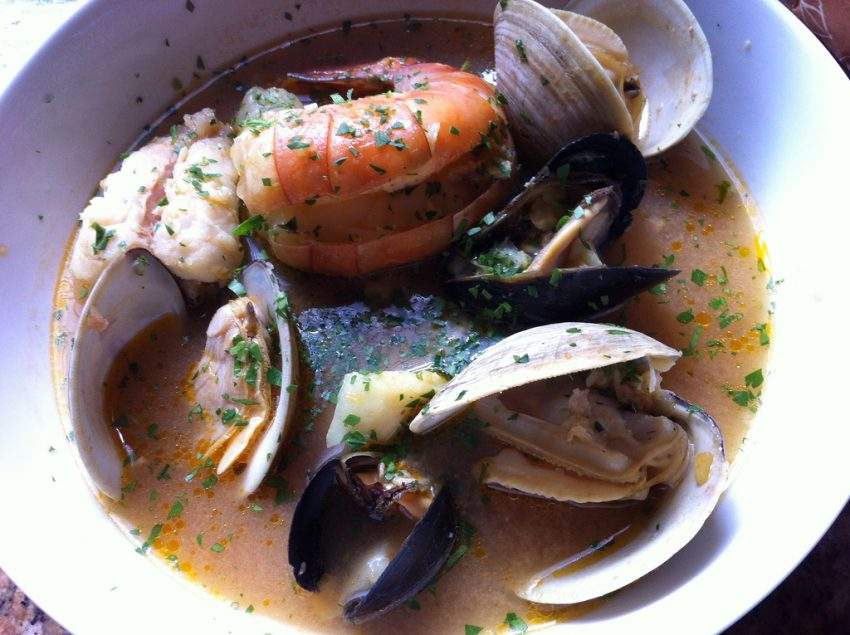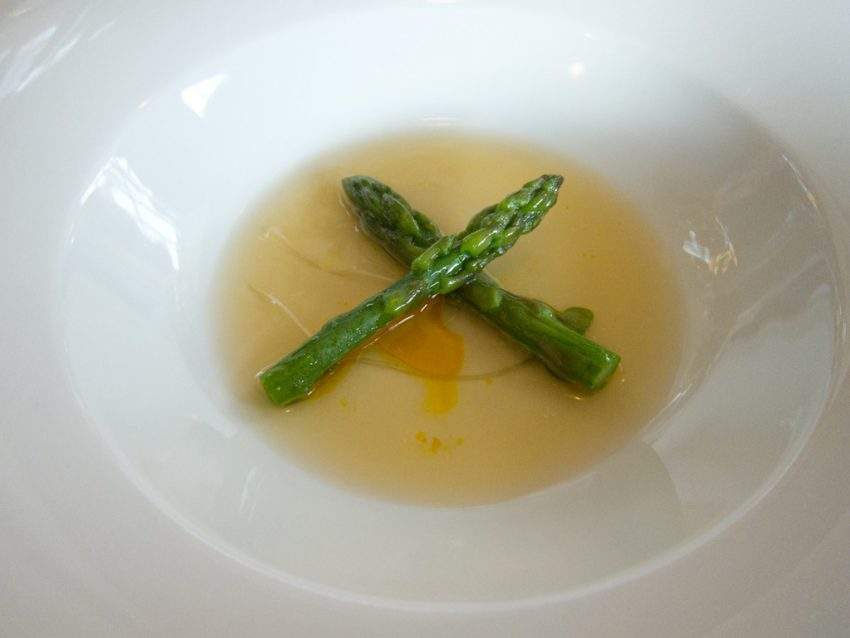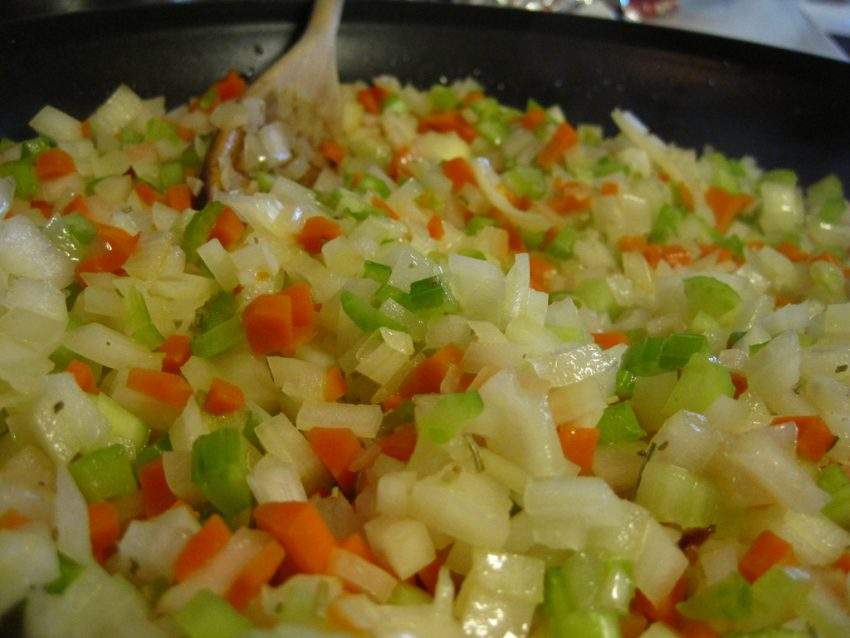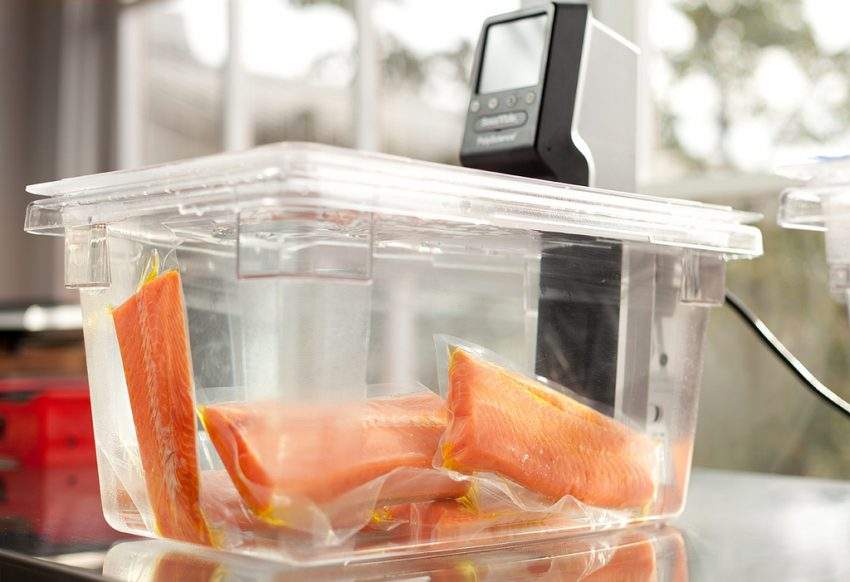Have you ever stared at a menu and not know what the heck it was spelling out? From confit to sous vide, many culinary terms are rooted in French and have little meaning to those unfamiliar with the language. Here’s a quick list of terms — complete with pronunciation, definition, and how we think it'll be used — to help you decipher chef lingo and some of the dishes on restaurant menus.
Bain-marie
Pronounced: ban-mah-REE
Definition: A hot water bath used in cooking food, such as custard and crème brulée. It's a gentle cooking process that creates gradual and uniform heat around the food.
Usage: "I filled my roasting pan with boiling water to create a bain-marie around my famous custard!" says you, the best home cook ever!
Bouillabaisse

Pronounced: bool-yuh-BAYZ
Definition: A classic French fish soup originating from the region of Provence. It's traditionally made with Mediterrean fish, such as scorpionfish and conger; as well as shellfish, like mussels. Bouillabaisse is usually made with herbs de Provence and served with the broth in one bowl and the fish in another, along with a garlic based sauce called rouille. Modern versions feature all the ingredients in one bowl.
Usage: "My family’s bouillabaisse includes mussels and sea bass, while Dan’s has canned tuna. Lame," says Dan's many unimpressed friends.
Chiffonade
Pronounced: shif-oh-NOD
Definition: A cutting technique used to cut herbs and leaf vegetables into fine strips or ribbons.
How to chiffonade:
- Stack leaves.
- Roll them tightly into a tube.
- Slice leaves perpendicular to the roll.
Usage: "Once I learned to chiffonade, chopping basil was a breeze, a delicious breeze," says Casey, puppet of Mr. Dress-up.
Chinois
Pronounced: SHIN-wah
Definition: A cone-shaped sieve/strainer with an extremely fine metal mesh. It is used to strain custards, purées, soups and sauces that require a very smooth consistency. It can also be used to dust desserts with powdered sugar.
Usage: "I used a chinois to ensure my creme anglaise didn’t have any lemon rind in it," says every quality pastry chef.
Confit
Pronounced: kon-FEE
Definition: A cooking technique where food is cooked in fat at a low temperature. It is mostly used for preparing meats (such as duck or pork) in their own fat. Traditionally, food is stored, covered, in this fat in a cool, dark place.
Usage: "Going low and slow, cooking duck confit is easier than you think," says Donald Duck.
Consommé

Pronounced: con-som-AY
Definition: A type of rich and strong clear soup that's clarified from stock or bouillon using egg whites (also known as a raft, but that's another lesson) to remove fat and impurities.
Usage: "The date ended terribly, but my beef consommé appetizer at the fancy French restaurant that he took me to was fantastic," says most of Chris Shaften's first dates.
En croute
Pronounced: on-KROOT
Definition: A dish where food is wrapped in pastry dough and then baked in the oven.
Usage: "I couldn’t decide what to bake en croute, so I just wrapped up some hotdogs I found in my mom's freezer," say a friend that we all have in our lives.
Mirepoix

Pronounced: meer-pwah
Definition: A chopped mixture of 50 per cent onion, 25 per cent carrot and 25 per cent celery, all in uniform size and commonly used to make stocks, sauces and soups for flavour and aroma.
Usage: "Mirepoix is also known as an aromatics because of the flavours it brings to many foods," advises an anonymous notable executive chef.
Roux
Pronounced: Roo, like the tiny kangaroo from Winnie the Pooh
Definition: A mixture of equal parts (by weight) fat and flour, used to thicken sauces and soups. It's usually made from two tablespoons of flour and one tablespoon of melted, clarified butter.
Usage: "A roux is used to thicken many sauces, like gravies," says Roo.
Sous vide

Pronounced: sue-VEED
Definition: A method of cooking where food is placed in an airtight plastic bag and submersed in a water bath for long periods of time at a constant low heat.
Usage: "My sous vide steak was much juicer and more tender than one that's done on the barbecue, but I miss the warm weather and cut-off jeans that come with that," says every Canadian in January.













